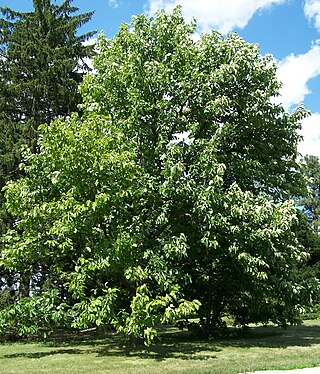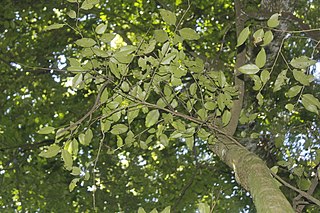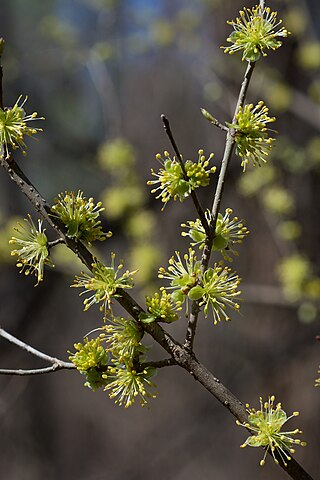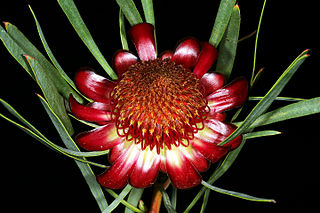
The sharp-tailed sandpiper is a small-medium migratory wader or shorebird, found mostly in Siberia during the summer breeding period and Australia for wintering.

Magnolia acuminata, commonly called the cucumber tree, cucumber magnolia or blue magnolia, is one of the largest magnolias, and one of the cold-hardiest. It is a large forest tree of the Eastern United States and Southern Ontario in Canada. It is a tree that tends to occur singly as scattered specimens, rather than in groves.
Jardinella acuminata is a species of small freshwater snails, aquatic gastropod mollusks in the family Tateidae.

Alnus acuminata is a species of deciduous tree in the Betulaceae family. It is found in montane forests from central Mexico to Argentina.
Guioa acuminata is a species of plant in the family Sapindaceae. It is endemic to the Philippines.
Hopea acuminata is a species of plant in the family Dipterocarpaceae. It is endemic to the Philippines. Locally called manggachapui and also dalingdingan, it is a hard straight grained wood that was used to build the early Manila galleons; it having qualities of being so dense as to not be affected by wood boring insects and one supposes marine worms.

Kirkia is a genus of plant in family Kirkiaceae. It was previously placed in family Simaroubaceae, but was transferred into Kirkiaceae, together with Pleiokirkia, because these genera produce neither quassinoids nor limonoids.

Terminalia acuminata is a tree species in the Combretaceae family. It was endemic to the Atlantic Forest in Brazil. The species was believed to be extinct in the wild from habitat loss, entering the IUCN Red List in 1998, with two individuals remaining in the Rio de Janeiro Botanical Garden.

Wimmeria is a genus of shrubs to small trees in the family Celastraceae. It is named after German botanist Christian Friedrich Heinrich Wimmer (1803–1868).
Wimmeria chiapensis is a species of plant in the family Celastraceae. It is endemic to Chiapas state in southern Mexico.
Wimmeria montana is a species of plant in the family Celastraceae. It is endemic to Mexico.

Forestiera acuminata, commonly known as eastern swamp privet, is a deciduous shrub or small tree that is native to the southeastern and central United States, growing primarily in or near wetlands. It is especially common along the Mississippi Valley as far north as Illinois and Indiana, but found also across the South from eastern Texas to South Carolina. It grows in swamp forests as well as rocky edges of streams and ponds.

Callicarpa acuminata is a species of beautyberry native to Latin America from Mexico to Bolivia. Unlike the other species of this genus, C. acuminata produces small berry-like fruits which can be dark-purple or dark blue-purple. The fruit can sometimes be white. The flowers blooms are white. The fruit grow in tight clumps and sometimes resemble grapes. They are cultivated as garden trees.
Wimmeria mexicana is a large shrub or small tree, often reaching 8 metres (26 ft) in height, that is common in the Southeastern United States and in regions of Mexico, including the states of Oaxaca, Chihuahua, and central to eastern Sonora. It is commonly called papelío and algodoncillo.

Musa acuminata is a species of banana native to Southern Asia, its range comprising the Indian Subcontinent and Southeast Asia. Many of the modern edible dessert bananas are from this species, although some are hybrids with Musa balbisiana. First cultivated by humans around 10 kya, it is one of the early examples of domesticated plants.

Maytenus acuminata is a variable, medium-sized, evergreen tree indigenous to Africa, including South Africa. Here it is especially common on the verges of afro-montane forest. It produces small, white flowers and bright orange or red berries. In cultivation it is useful as a light shade tree, as an ornamental, or for attracting birds. The reference to "silk" in some of its common names derives from the way in which some of its sap will congeal into silky threads on contact with air. This can most easily be demonstrated by carefully breaking a leaf across, then gently pulling the two halves apart. The threads appear at points that coincide with the positions where major veins in the leaf have broken. The threads do not appear to have any practical use, least of all as fibre.
Diospyros acuminata is a tree in the Ebony family which is endemic to Sri Lanka.

Premna acuminata, commonly known as the firestick tree, or ngalinginkil in the Bardi language, is a species of plant in the mint family. It is native to Northern Australia where it occurs from Western Australia through the Northern Territory to Queensland.

Musa banksii is a species of wild banana, native to New Guinea and Australia (Queensland), and most likely introduced to Samoa. It was first described by Ferdinand von Mueller in 1863 from plants collected in Queensland, Australia. Thereafter, taxonomists have variously treated it as a unique species or as a subspecies of Musa acuminata. The first one to note an affinity with Musa acuminata was Ernest E. Cheesman in 1948. In 1957, Norman Simmonds reclassified it as a subspecies of Musa acuminata based on extensive field observations in New Guinea, Australia, and Samoa. In 1976, George Argent chose to treat it as a species.

Protea acuminata, also known in English as the black-rim sugarbush, or in the Afrikaans language as sederbergsuikerbos, is a flowering shrub belonging to the genus Protea. The plant is endemic to South Africa. There are isolated populations at Nieuwoudtville, and in the Cederberg, Stettynskloof and Riviersonderend Mountains. It can grow as an upright tree. It can become up to two metres in height. It blooms from June to September, with the peak of July to August. Periodic wildfires may destroy the adult plants, but the seeds can survive such an event. The seeds are dispersed by means of the wind. The plant is monoecious with both sexes in each flower. It is unknown what causes the pollination to occur. The plant grows in sandy plains and coastal lowlands from sea-level to altitudes of 400 metres. It is a widespread species which is not in danger, and the conservation status has been assessed as 'least concern'.













